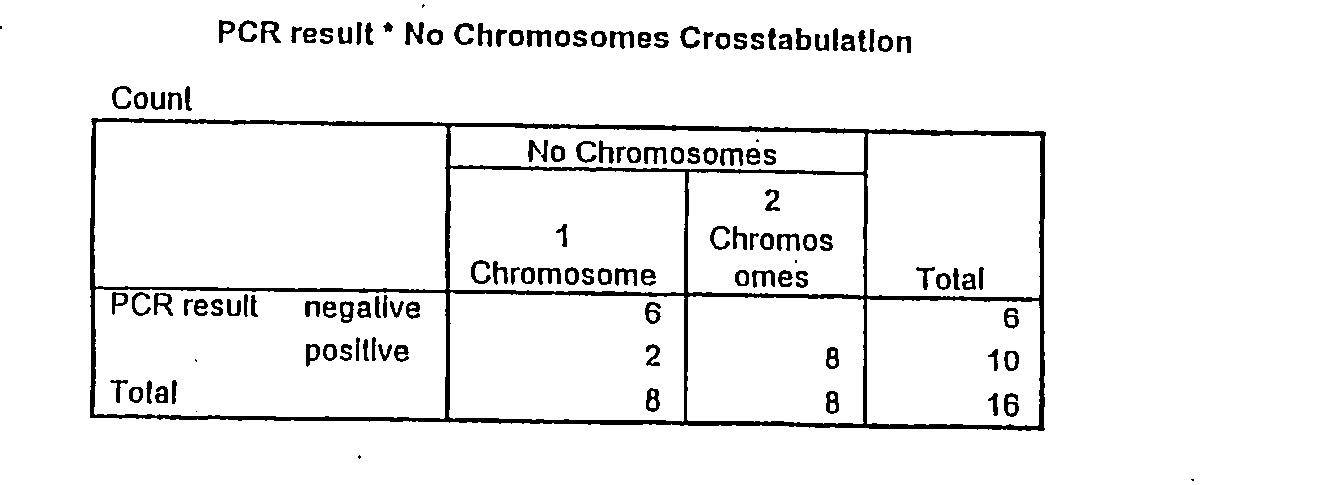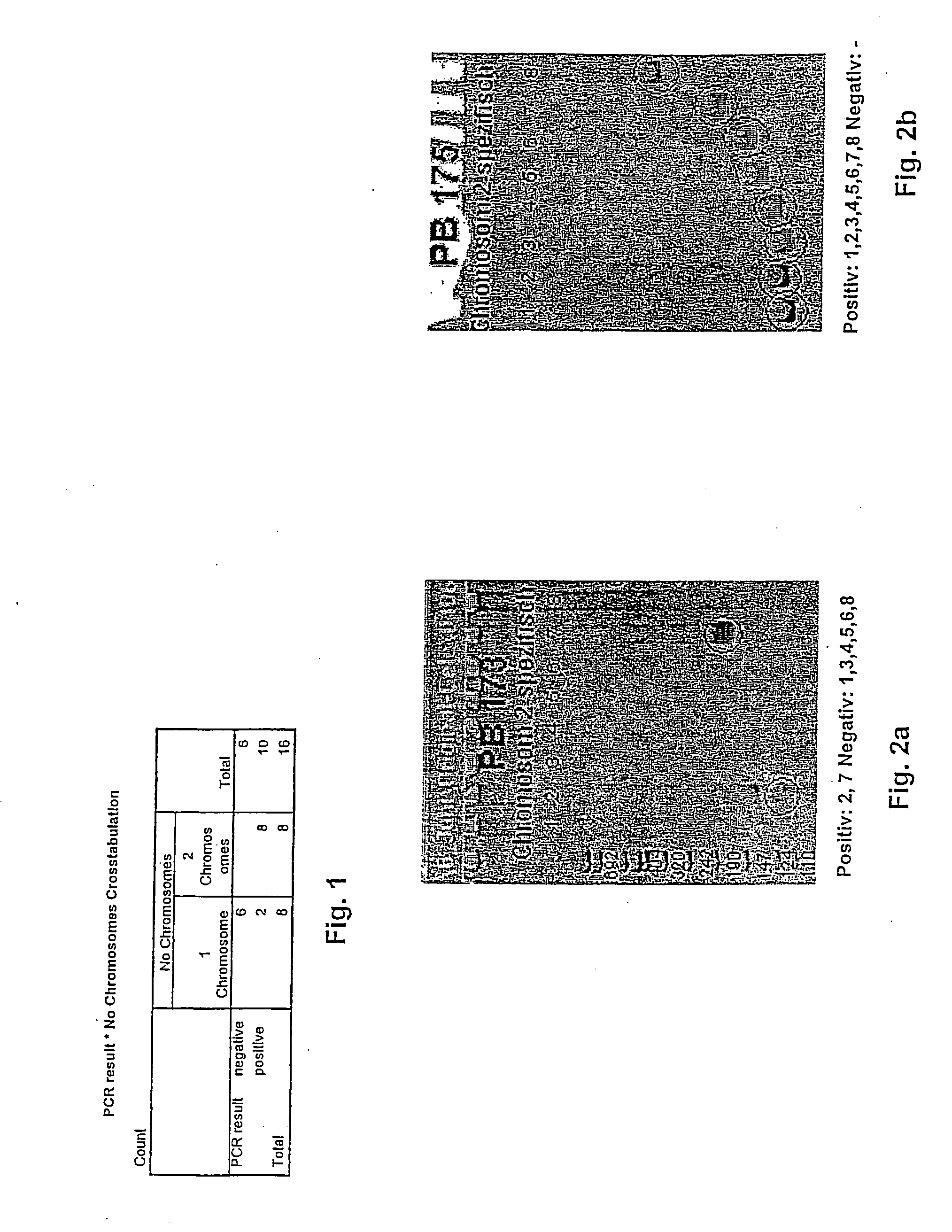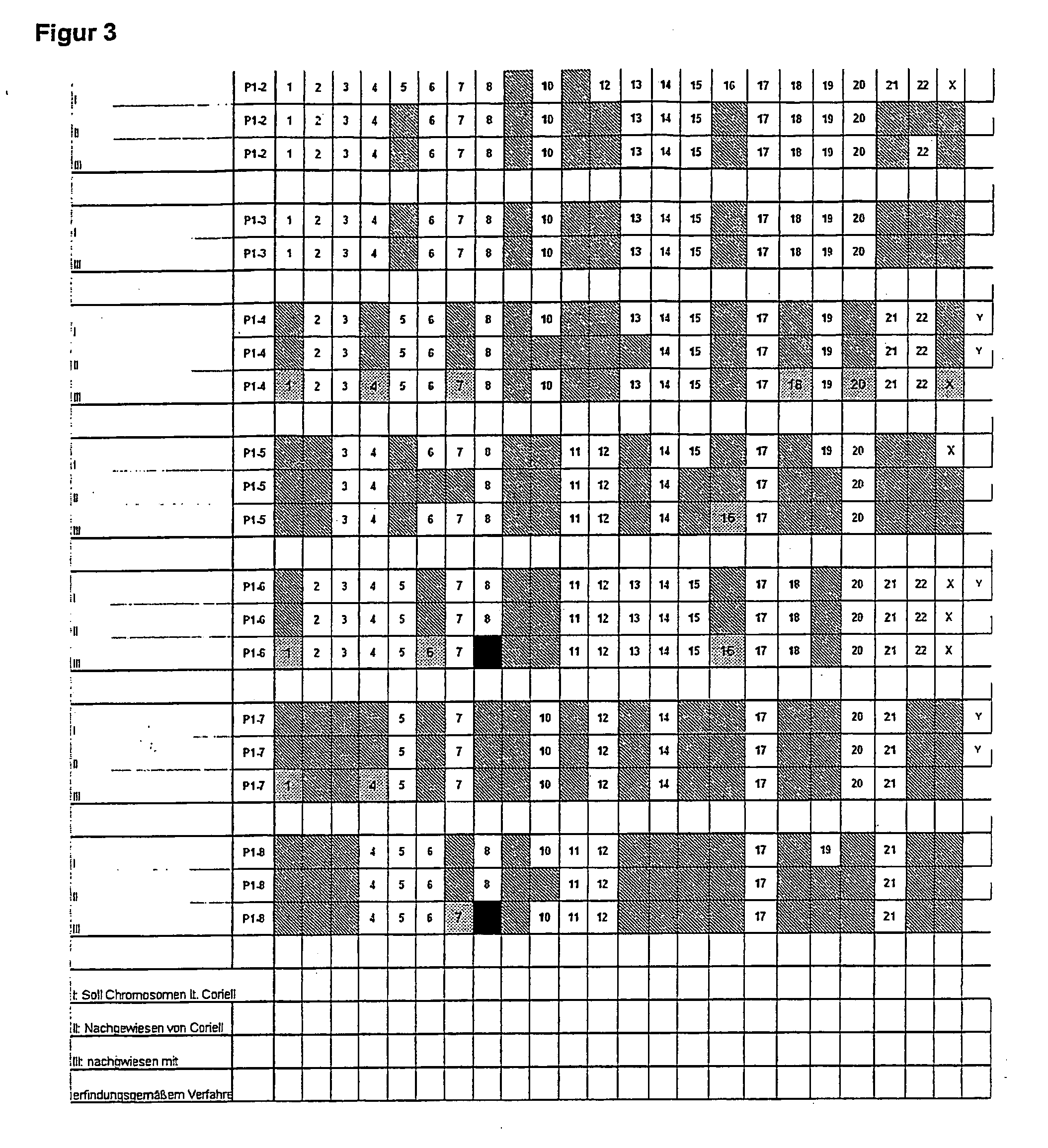Method for Determining the Abundance of Sequences in a Sample
a sequence and sequence technology, applied in biochemistry apparatus and processes, specific use bioreactors/fermenters, after-treatment of biomass, etc., can solve the problems of difficult to locate such sections, adverse effect on the function of the resulting protein, and difficult validation of fish analysis
- Summary
- Abstract
- Description
- Claims
- Application Information
AI Technical Summary
Benefits of technology
Problems solved by technology
Method used
Image
Examples
example 1
[0110]An investigation is to be conducted to determine whether chromosome 2 is present once or twice in a pole body.
[0111]This involved a pole body being washed with distilled water following removal and placed on a coated slide. This pole body formed a sample 1. For comparison, a sample 2 with two pole bodies was prepared in the same way.
Single Cell WGA-PCR
[0112]With a single cell WGA-PCR the two samples were amplified. A single cell WGA-PCR is designed to amplify the genetic material of a single cell or a small number of cells. The single cell WGA-PCR is carried out on a slide, whereby
1 μl PCR mix and 5 μl mineral oil were added to each of the samples.
25 μl PCR mix have the following constituents:
19.125 μl ampoule water2.5 μlMgCl2 (25 mM)2.5 μldNTP mix (per 2 mM)0.375 μl HotStar Taq DNA polymerase fromQiagen(5 U / μl)0.5 μlAlel primer (100 pmol / μl)
The Ale1 primer has the following sequence:
Ale15′-TCCCAAAGTGCTGGGATTACAG-3′(SEQ ID No. 1)
The PCR preparations, each consisting of one sa...
example 2
[0122]7 cell lines (P1-2 to P1-8) were tested for the presence or otherwise of given chromosomes. The cell lines were obtained from Coriell. The cells obtained from Coriell had already been tested by Coriell itself for the presence or otherwise of given chromosomes. The cells were also tested using the method in the invention. The result is depicted in FIG. 3.
[0123]The cells' DNA is delivered and contains, according to the packing leaflet, a given panel of human chromosomes. In addition to this statement from Coriell, a test result can still be obtained from Coriell's website, based on a blotting test. It is unclear why the company provides two sets of details. The blotting test is clearly sensitive enough also to detect chromosomes that are only contained in a fraction of the cells. The third line in FIG. 3 shows the result of the chip in each case.
Result:
[0124]In over 90% of cases the results of the method according to the invention agree with those of the other methods.
[0125]Expe...
example 3
[0128]During the reduction division of a human egg cell, the diploid chromosome set with 4 copies of a sequence is reduced to the mature egg cell with only one copy. The division takes place in 2 stages:
a. Division of the homologous chromosomes in the egg cell←→1st pole body
b. Division of the chromatides in the mature egg cell←→2nd pole body
[0129]The first pole body contains 2 copies of a sequence, the mature egg cell and the second pole body each contain one copy of a sequence.
[0130]The following distributions (in some cases, wrong distributions) are conceivable:
Mature egg cell contains 4 copies←→pole bodies contain no copies
Mature egg cell contains 3 copies←→pole bodies contain one copy
Mature egg cell contains 2 copies←→pole bodies contain 2 copies
Mature egg cell contains 1 copy←→pole bodies contain 3 copies
Mature egg cell contains no copies←→pole bodies contain 4 copies
Wrong distributions occur and can be used to demonstrate the accuracy of the inventive method.
[0131]In the examp...
PUM
| Property | Measurement | Unit |
|---|---|---|
| threshold value | aaaaa | aaaaa |
| electrophoresis | aaaaa | aaaaa |
| optical | aaaaa | aaaaa |
Abstract
Description
Claims
Application Information
 Login to View More
Login to View More - R&D Engineer
- R&D Manager
- IP Professional
- Industry Leading Data Capabilities
- Powerful AI technology
- Patent DNA Extraction
Browse by: Latest US Patents, China's latest patents, Technical Efficacy Thesaurus, Application Domain, Technology Topic, Popular Technical Reports.
© 2024 PatSnap. All rights reserved.Legal|Privacy policy|Modern Slavery Act Transparency Statement|Sitemap|About US| Contact US: help@patsnap.com










